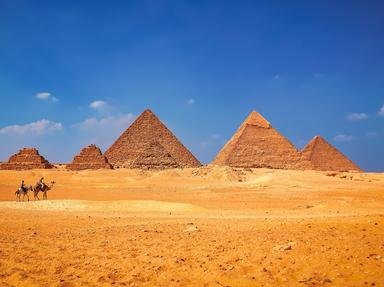Quiz Answer Key and Fun Facts
1. In predynastic Egypt the people lived in tribes along the Nile. Eventually the tribes joined and organized political districts. What were these districts called?
2. After the annual flooding of the Nile, it was necessary to redraw property lines. This led to the development of which science?
3. The flooding of the Nile could potentially be very destructive. Ancient Egyptian astronomers noted that the highest flood levels occurred at the same time a certain star aligned with the rising sun. What was the name of the star?
4. The ancient Egyptians constructed a simple device that helped transport water to otherwise dry land. What was this device called?
5. The ancient Egyptians learned to count the days between the annual flooding of the Nile, which led to the development of a calendar which was called the Nile Year. How was that calendar similar to ours today?
6. The ancient Egyptians had formidable natural protection against invaders. The Sahara Desert discouraged invasion, but so did the Nile. Name the natural rapids that blocked transportation on the river.
7. Of course, the Nile provided the ancient Egyptians with a super highway to travel. One of the boats constructed was for the purpose of sea travel, as well as transporting heavy building materials. What did they called these boats?
8. The Nile was a great source of food for the ancient Egyptians. Which dangerous animal was hunted because it represented a threat not only to river travel, but to precious food crops as well?
9. As barriers in the Nile were overcome by the ancient Egyptians, they found people who lived to the south who were willing to trade with them. What were these people called?
10. A plant grew along the Nile which had many uses for the ancient Egyptians. What did they use to make paper?
Source: Author
ponycargirl
This quiz was reviewed by FunTrivia editor
bloomsby before going online.
Any errors found in FunTrivia content are routinely corrected through our feedback system.

